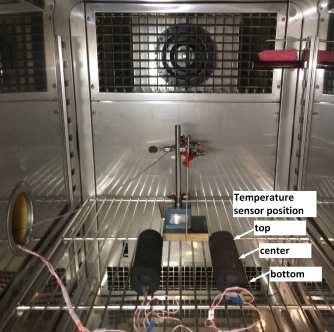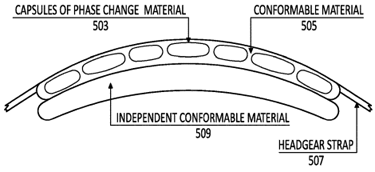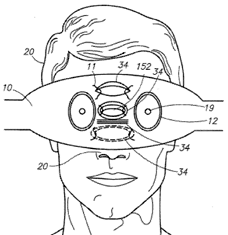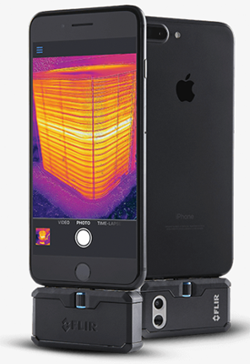 The Phase Change Matters e-mail newsletter is a weekly summary of the latest news and research on phase change materials and thermal energy storage. To subscribe, visit www.puretemp.com/subscribe. For more frequent updates, follow @puretemp on Twitter or visit the Phase Change Matters blog, www.puretemp.com/pcmatters.
The Phase Change Matters e-mail newsletter is a weekly summary of the latest news and research on phase change materials and thermal energy storage. To subscribe, visit www.puretemp.com/subscribe. For more frequent updates, follow @puretemp on Twitter or visit the Phase Change Matters blog, www.puretemp.com/pcmatters.
RESEARCH
Ph.D. student digs deep into the T-history method
The lab folks at PureTemp have had a keen interest in the T-history method since our days as a tech startup with a small budget. T-history is a relatively simple, low-cost way to determine the heat of fusion, specific heat and thermal conductivity of phase change materials.
 The term appears in the title of a paper that popped up in one of our automated searches earlier this month: “Characterizing phase change materials using the T-History method: On the factors influencing the accuracy and precision of the enthalpy-temperature curve.” The lead author, Pepe Tan, is a pursuing a Ph.D. at Chalmers University of Technology in Sweden. I contacted him to find out more.
The term appears in the title of a paper that popped up in one of our automated searches earlier this month: “Characterizing phase change materials using the T-History method: On the factors influencing the accuracy and precision of the enthalpy-temperature curve.” The lead author, Pepe Tan, is a pursuing a Ph.D. at Chalmers University of Technology in Sweden. I contacted him to find out more.
Q: What prompted your interest in studying the T-history method?
A: “When I started my Ph.D. at Chalmers, T-history was a good complement to the available DSC instrument in our research group. And it was a nice opportunity to collaborate with ZAE Bayern and learn the method. While implementing the method, we found it was very worth studying certain aspects of it in parallel, because of how different the method has been presented so far in the scientific community.”
Q: Do you envision T-history replacing DSC for characterizing and validating PCMs as an industry standard? If not for PCM validation, perhaps for application engineering and thermal modeling?
A: “I definitely consider T-history and DSC as complementary methods since their limitations for finding the intrinsic PCMs properties are still subject to research. With this uncertainty, any measurement available from different sources would be useful for the engineer to carefully estimate the actual behavior of the PCM in its application.”
Q: When do you believe T-history will be studied and validated sufficiently to become adopted as a commercially available piece of equipment?
 A: “To reach that goal, a systematic assessment of different implementations of the method (setup and data evaluation) would be necessary. But spending this effort also depends on the current needs for accurate PCM properties in typical applications.”
A: “To reach that goal, a systematic assessment of different implementations of the method (setup and data evaluation) would be necessary. But spending this effort also depends on the current needs for accurate PCM properties in typical applications.”
Q: Will the mathematical model of the method become open-source and available for laboratories?
A: “The data evaluation method in the paper should be seen as one proposal on how to calculate the enthalpy from real experimental data. And it is presented in detail, so that it can be recreated.
“The challenge in our experiments was to negate the noise amplification when differentiating the temperature over time data. But this could be done in many different ways, which will in turn affect the enthalpy results. We made the raw experimental data available so that other data evaluation methods can be tested.”
Q: What do you view as the most significant challenge with T-history? How does this compare to the challenges associated with DSC?
A: “That would be to perform a rigorous measurement uncertainty analysis in order to specify a reliable limit for accuracy and precision in terms of an uncertainty. Since this strongly depends on the individual implementation of the method and the chosen data evaluation, the DSC is in my opinion one step ahead.”
Q: Is T-history capable of accurate and precise measurement with thermal conductivity additives or nucleating agents?
A: “This depends on the material and the actual implementation of the method. And this would be an example where the possibility to use complementary methods that utilize different sample sizes like DSC and T-history will be helpful to filter out the intrinsic material behavior. The larger sample sizes of the T-history setup should increase the chance to actually have representative samples, meaning samples containing a representative amount of the nucleating agent and/or the thermal conductivity additives.”
Q: What are your postdoctoral plans?
A: “I expect to graduate by June 2020. At the moment, I plan to wait and see what options are available when the graduation date comes a bit closer.”
PATENTS
Non-invasive brain temperature-regulating devices for enhancing sleep

U.S. patent application 20180200476 (inventors Robert E. Tucker, Sanibel, Fla., and Jeffrey J. Schirm, Monroeville, Penn.):
“Methods, systems and devices for enhancing sleep, including enhancing the quality of sleep, reducing sleep onset time, increasing total sleep time, treating insomnia, and/or treating other neurological disorders by non-invasive temperature regulation of the frontal cortex prior to and/or during sleep. Described herein are thermal applicators that include phase change materials and/or evaporative cooling, as well as headgear for securing the applicators comfortably against the appropriate region of the user’s head.”
Cooling system and method
U.S. patent application 20180209716 (applicant PepsiCo Inc., Purchase, N.Y.):
“A cooling system having a cooling chamber including a surface defining one or more openings. A surface is configured to hold at least one container. An access door provides access to the cooling chamber. A refrigeration system is configured to cool the cooling chamber by forcing cool airflow through the one or more openings in the surface. The airflow through each of the one or more openings may be similar. … In some embodiments of the cooling system 100, portions of the cooling chamber 200 can include a phase change material.”
Devices for controlling conditions and delivery of substances
U.S. patent application 20180207368 (inventor Ron Nagar, Tel Aviv, Israel)
“Embodiments of the present disclosure are directed to devices, systems, and methods for controlling environmental conditions for a volume of material. In some embodiments, a handheld, portable environmental control sleeve (ECS) is disclosed which is configured for controlling at least one environmental condition of a drug contained within a drug delivery or storage device (DDSD). The ECS includes an environmental control mechanism (ECM), thermal insulation material, at least one of a power source, a processor, at least one electrical contact, at least one indicator, at least one switch, at least one environmental condition sensor, a wireless transceiver, a phase change material and at least one heat dissipater.”
Pair of eye goggles
U.S. patent application 20180200113 (applicant Alan N. Schwartz, Edmonds, Wash.):
 “A pair of eye goggles is described. A strap can be fit removably around a head. A nosepiece can be fit over the nose. A pair of eyepieces includes a transparent lens and a frame. An airtight and watertight skin interface is adapted to fit securely against the wearer’s skin. A flex layer includes a seal that is at least one of airtight and watertight and which is structurally interposed between at least a portion of two or more of the skin, the nosepiece, the eyepieces, the transparent lens, the frame, and the skin interface. The flex layer includes a phase change material that is resiliently and elastically malleable. The flex layer is deformable such that at least one portion can transmute the magnitude of a force applied and can redirect the force in at least one direction. External forces acting are at least one of mitigated, transmuted, and isolated.”
“A pair of eye goggles is described. A strap can be fit removably around a head. A nosepiece can be fit over the nose. A pair of eyepieces includes a transparent lens and a frame. An airtight and watertight skin interface is adapted to fit securely against the wearer’s skin. A flex layer includes a seal that is at least one of airtight and watertight and which is structurally interposed between at least a portion of two or more of the skin, the nosepiece, the eyepieces, the transparent lens, the frame, and the skin interface. The flex layer includes a phase change material that is resiliently and elastically malleable. The flex layer is deformable such that at least one portion can transmute the magnitude of a force applied and can redirect the force in at least one direction. External forces acting are at least one of mitigated, transmuted, and isolated.”
Thermally insulated packaging for shipping liquid in bottles
U.S. patent application 20180202700 (applicant Viking Cold Solutions Inc., Houston, Texas):
“A thermally insulated structure for shipping goods, comprising: an insulated box comprising a goods receptacle and a phase change material module receptacle; a phase change material module; and a set of vacuum panels configured to form an encapsulating layer around the insulated box.”
IN BRIEF
• The Phase Change Matters blog is a finalist in the 2018 PR News Platinum and Agency Elite Awards. Other finalists in the blog category include Shopfloor (National Association of Manufacturers), The Blonde Abroad (R&R Partners) and Transform (Microsoft Inc.). Winners will be announced at a luncheon in New York City on Sept. 21.
• Phase Change Material Products Ltd. and Fraunhofer Institute for Solar Energy Systems ISE will be among the exhibitors at Chillventa 2018. The trade show for refrigeration, air conditioning, ventilation and heat pumps will be held Oct. 16-18 in Nuremberg, Germany.
 • Flir Systems has released the One Pro LT thermal image camera for the iPhone. The new model has many of the core features of the popular One Pro model but at a lower price: $299.
• Flir Systems has released the One Pro LT thermal image camera for the iPhone. The new model has many of the core features of the popular One Pro model but at a lower price: $299.
• Ed Brzytwa, the American Chemistry Council‘s director of international trade, has urged the Trump administration to remove all chemicals and plastics products, valued at $2.2 billion, from a list of Chinese goods subject to possible increased tariffs. In testimony before officials from the Office of the U.S. Trade Representative this week, Brzytwa said higher tariffs on those products “has the potential to harm America’s manufacturing renaissance and is counterproductive to U.S. economic interests.”
• The program for the 13th Conference on Advanced Building Skins has been posted. The event will be held Oct. 1-2 in Bern, Switzerland. Last year’s conference included at least 10 presentations on phase change material. “Phase change” appears just twice in this year’s program. A presentation by Jose Manuel Montes Donaire of AKT II Envelopes, London, “Thermal tuning of envelopes and its use as a parametric design tool,” will address the topic of energy buffering with phase change materials. A presentation by Annie Shaw of Manchester School of Art on the architectural potential of knitted textiles will explore “three-dimensional seamlessness and stretch, phase-change form-finding and form-fixing.”
• Pillow talk: Phase change material is no longer enough. Manufacturers like Tulo and Blu Sleep are turning to titanium particles and essential oils in an effort to stand out it in the crowded pillow market.
• Pelican BioThermal‘s newest temperature-control bulk shipper, the CoolPall Flex, is now available for purchase. The CoolPall Flex, unveiled in Milan in March, has a capacity range of 140 to 767 liters. Options include standard insulation or vacuum insulated panels and water-based or PCM coolants in single or double coolant configurations.
• Sonoco ThermoSafe and United Cargo announced a global partnership agreement for the leasing of the PharmaPort 360 temperature-controlled bulk shipping container. The agreement enables pharmaceutical shippers to lease PharmaPort 360 containers directly from United Cargo.
RESEARCH ROUNDUP
For our full list of recent academic research, see puretemp.com/academic. Here are highlights from the past week:
From Renewable Energy:• Using Renewables Coupled with Thermal Energy Storage to Reduce Natural Gas Consumption in Higher Temperature Commercial/Industrial Applications
From Solar Energy:
• Development of a solar thermal storage cum cooking device using salt hydrate
From Applied Energy:
• One-step fabrication of fatty acids/nano copper/polyester shape-stable composite phase change material for thermal energy management and storage
• Palmitic acid/polyvinyl butyral/expanded graphite composites as form-stable phase change materials for solar thermal energy storage
From Chinese Journal of Chemical Engineering:
• Preparation and phase change performance of Na2HPO4·12H2O@poly(lactic acid) capsules for thermal energy storage
From Applied Thermal Engineering:
• Thermal performance of sodium acetate trihydrate based composite phase change material for thermal energy storage
• Performance improvement and energy consumption reduction in refrigeration systems using phase change material (PCM)
• A thermal conductive composite phase change material with enhanced volume resistivity by introducing silicon carbide for battery thermal management
• Numerical and Experimental study on the performance of a new two -layered high-temperature packed-bed thermal energy storage system with changed-diameter macro-encapsulation capsule
From Colloids and Surfaces A: Physicochemical and Engineering Aspects:
• Green Nano-encapsulation Technique for Preparation of Phase Change Nanofibers Mats with Core-Sheath Structure
From Energy:
• The Stefan moving boundary models for the heat-dissociation hydrate with a density difference
• Experimental study of using both ethylene glycol and phase change material as coolant in photovoltaic thermal systems (PVT) from energy, exergy and entropy generation viewpoints
• Screening of sugar alcohols and their binary eutectic mixtures as phase change materials for low-to-medium temperature latent heat storage. (Ⅰ): Non-isothermal melting and crystallization behaviors
• Preparation and investigation of multicomponent alkali nitrate/nitrite salts for low temperature thermal energy storage
From International Journal of Thermal Sciences:
• Analytical and numerical analysis of PCM solidification inside a rectangular finned container with time-dependent boundary condition
From Construction and Building Materials:
• Elaboration and properties of a composite bio-based PCM for an application in building envelopes
From International Journal of Heat and Mass Transfer:
• Lorentz forces effect on NEPCM heat transfer during solidification in a porous energy storage system
• A translucent honeycomb solar collector and thermal storage module for building façades
NETWORKING
Connect with PCM experts and industry leaders on LinkedIn
 More than 1,300 people have joined a LinkedIn group devoted to the discussion of phase change material and thermal energy storage. The Phase Change Matters group is an interactive complement to the award-winning blog and newsletter of the same name.
More than 1,300 people have joined a LinkedIn group devoted to the discussion of phase change material and thermal energy storage. The Phase Change Matters group is an interactive complement to the award-winning blog and newsletter of the same name.
You are invited to join the group and connect with PCM and TES experts from around the world. This week we welcome Rahul Mago, production manager, Continental Carbon, Phenix City, Ala.; Rahmat Sotudeh-Gharebagh, professor of engineering, University of Tehran, Iran; and Muhammad Anisur Rahman, Ph.D. student, Monash University, Melbourne, Australia.